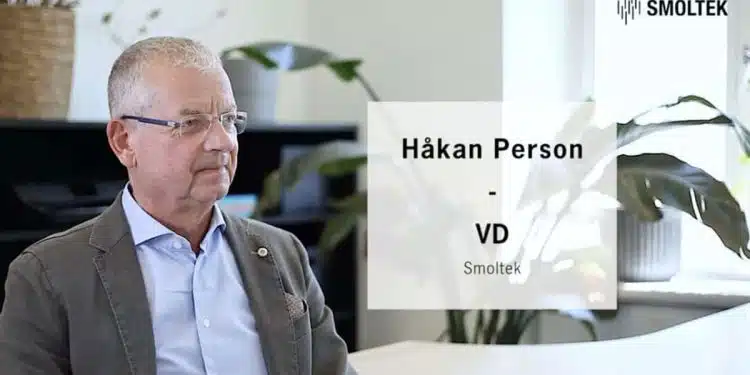Smoltek Nanotech Holding AB has published a newsletter addressed to shareholders, investors and other stakeholders. The newsletter includes an interview with Smoltek’s CEO, Håkan Persson, who talks about CNF carbon nanofiber capacitor milestones achieved in 2023, as well as future prospects for the two group companies Smoltek Semi and Smoltek Hydrogen.
Smoltek’s latest newsletter includes, among other things, an interview with the company’s CEO, Håkan Persson, who reports on Smoltek’s development and milestones during 2023 and looks ahead to the first part of 2024.
Other parts of the newsletter include an overall summary of the Smoltek Group’s progress in 2023 as well as new articles that have been published on the company’s IR blog.
Smoltek Semi develops technology for manufacturing carbon nanofiber-based capacitors, called CNF-MIM. During 2023, the group company has developed industrial process steps for mass production of capacitors and deepened the collaboration with YAGEO Group, which is one of the world’s largest manufacturers of passive electronic components including capacitors. The parties are now finalizing negotiations on an exclusive license and service agreement for the manufacture and sale of Smoltek capacitors.
Smoltek Hydrogen develops technology for manufacturing a cell material for the anode electrode in electrolyzer cells, called ECM. The cell material significantly reduces the amount of precious iridium in the cell, enabling cost-effective volume production of fossil-free hydrogen. In 2023, the group company has achieved significant technological progress to reduce the iridium load in the electrolyzer cell, which is one of the keys for the hydrogen industry to scale up the production of PEM electrolyzers for fossil-free hydrogen production.
further read:
- Smoltek Announces Exclusive License for CNF-MIM Carbon Nanofiber Capacitors with YAGEO
- Smoltek Published Video Interview with Phil Lessner, CTO at Yageo, on Future of Thin CNF-MIM Capacitor Collaboration
































